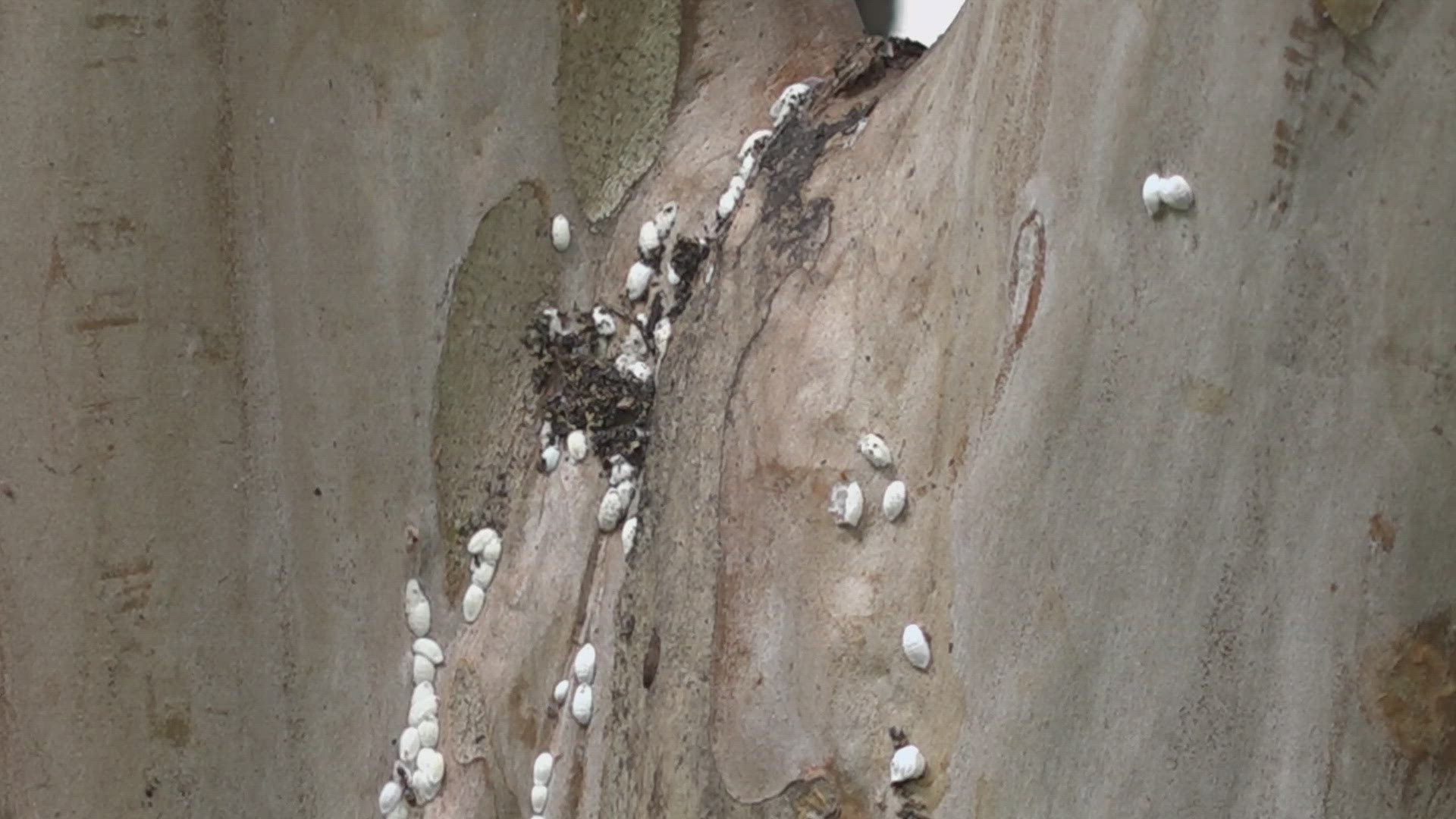WASHINGTON — Crape Myrtle trees are found all over the DMV. They boast beautiful blooms and are a staple of many landscapes. But little white critters, called bark scale, are threatening the trees.
The insects were first found in Texas two decades ago, but spread quickly throughout the southeast and can now be found all over the mid-Atlantic.
"It's causing significant stress to crape myrtles all over the area," explains Dr. Chris Riley, an entomologist and research scientist with Barlett Tree Research Laboratories.
They spread throughout nurseries that sell the trees in large quantities, and from there the insects are spread far and wide. They’re so small even wind can blow them from one tree to another.
The bark scale sucks out sap from the trees and that sugar and water byproduct can cover anything around it,, including your driveway, sidewalk, other trees and eventually that sugary coating turns into a black moldy mess.
"It can be very difficult to get off -- we don't have a single effective way to get rid of it," Riley said. "But it can create a real nuisance and lower that really high esthetic value that comes from that beautiful exfoliating bark on crape myrtles."
It can also harm other plants around your tree.
"When they're covered in that black mold they don't have an easy of an ability to get sunlight so that can actually act as a secondary stressor from a scale infestation on a totally different host plant," Riley said.
There is a natural predator to the pesky little bugs. But the catch is, they look just like them. The difference is, they're bigger, they move and they have a slightly different texture. And it’s important to know the difference before you try to treat your tree, because often times you can take care of bark scale on your own.
"When you can catch it early, you can use something like a scrub brush and just physically remove them from the stem," explains Riley.
When it spreads too much, you may have to turn to a chemical treatment.
"With managing this pest it's really important to utilize products that get you good control while also minimizing the harm to non-target organisms," Riley said. "Things like pollinators, predators and parasitoids."
He also says bark scale are one of the top five hardest pests to manage in an urban landscape. And keep in mind, even if you do treat your trees and get rid of bark scale, you have to check back year after year to make sure they don’t come back.

